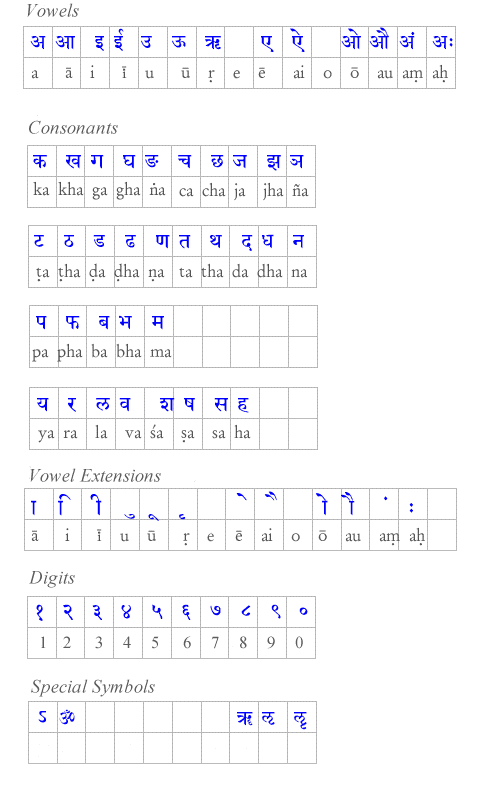
|
Multilingual Systems Languages and Scripts of India This page presents the details of the scripts of the different languages of the country. As seen earlier, the languages of India are phonetic in nature and hence the writing system for any language maps the sounds of the aksharas to specific shapes. The basic set of aksharas for most languages consist of sixteen vowels and about forty consonants. These are shown in the illustration below. For reference, the aksharas are shown along with the equivalent Roman Diacritic representations. The actual rules for forming consonant vowel combinations and conjunct characters vary from script to script. Thus when two or more scripts are in use for a specific language, one is expected to know the actual rules as well as the shapes that relate to some conjuncts when reading text in each script. Please also note that in most cases, a consonant vowel combination is written by adding a vowel extension (matra) which is equivalent to the medial vowel representation. Conjuncts are generally written by concatenating half forms of each consonant as in Devanagari and derived scripts, or one below the other as in South Indian scripts. The illustration will also indicate aksharas specific to the language and in some cases, special symbols used printed documents. Script shown: sanskrit
The Devanagari script has evolved over a period of several hundreds of years. The script seen above has been in vogue for about a hundred years now. Many books printed in Europe during the second half of the ninteenth century exhibit variations for aksharas such as "ah" "nna" (retroflex consonant). |
|
Best Viewed at 800x600 Last Updated on July 28, 2000
